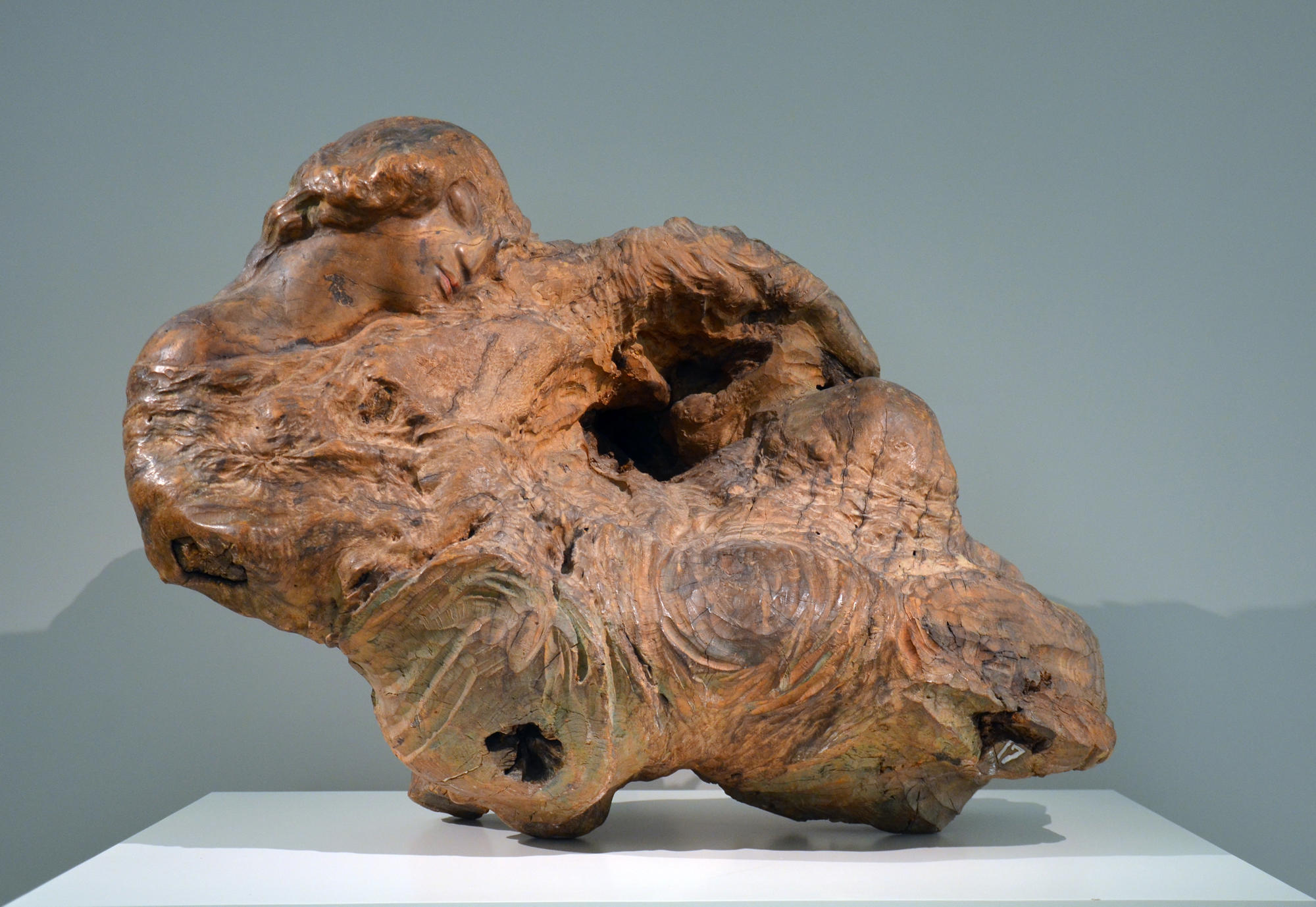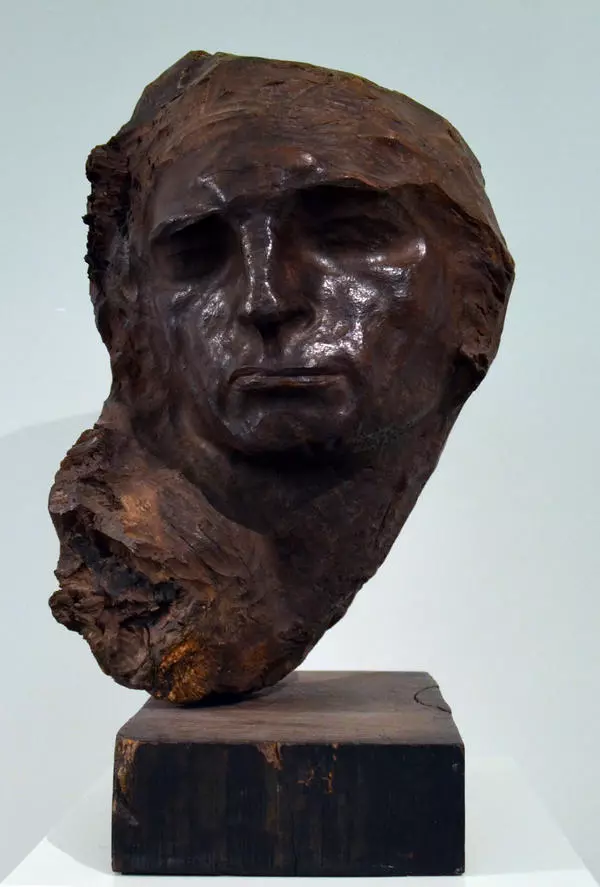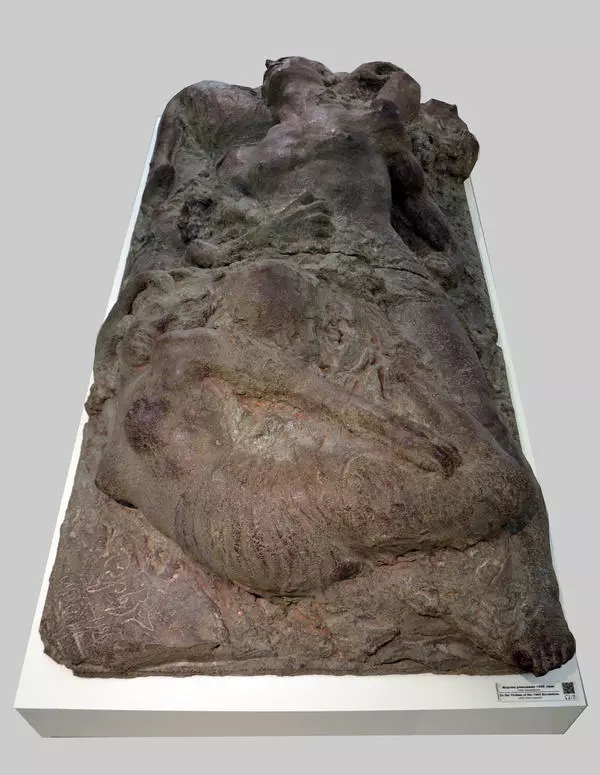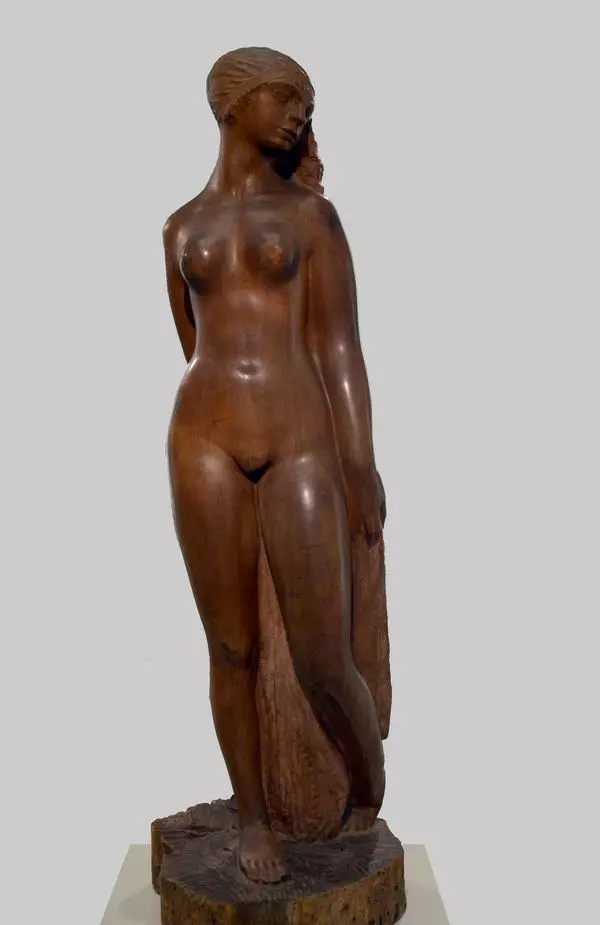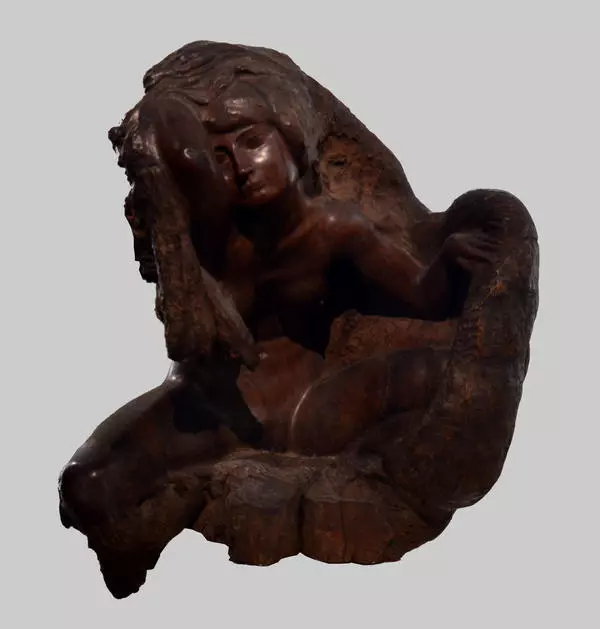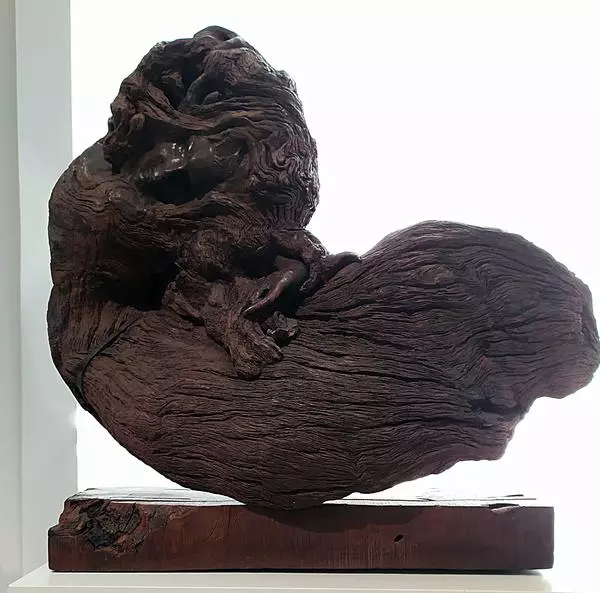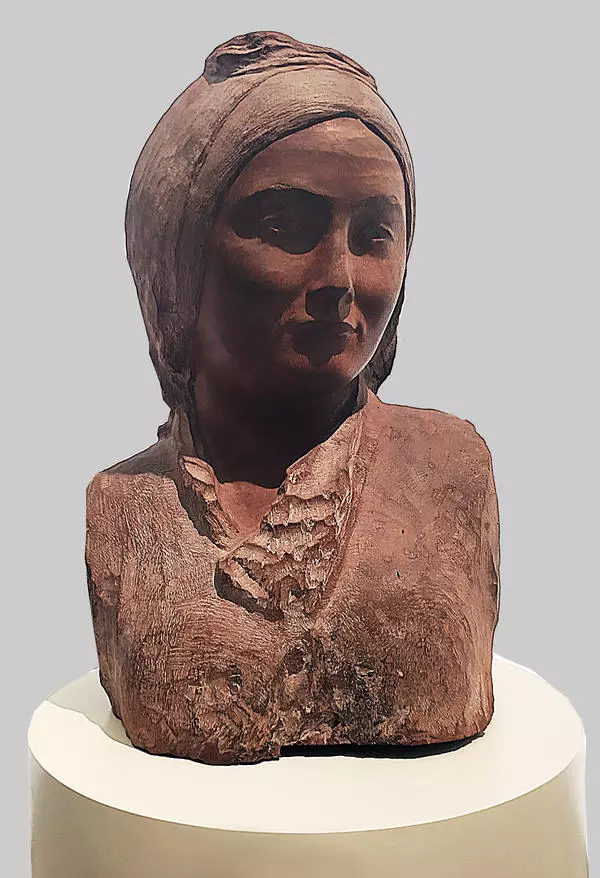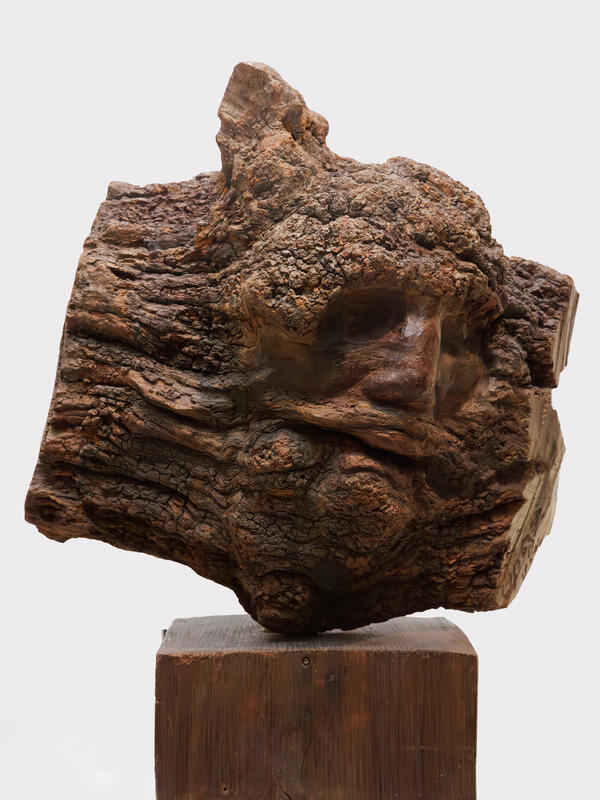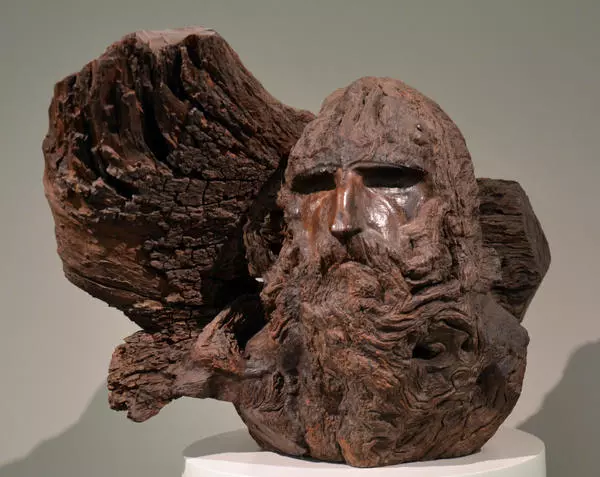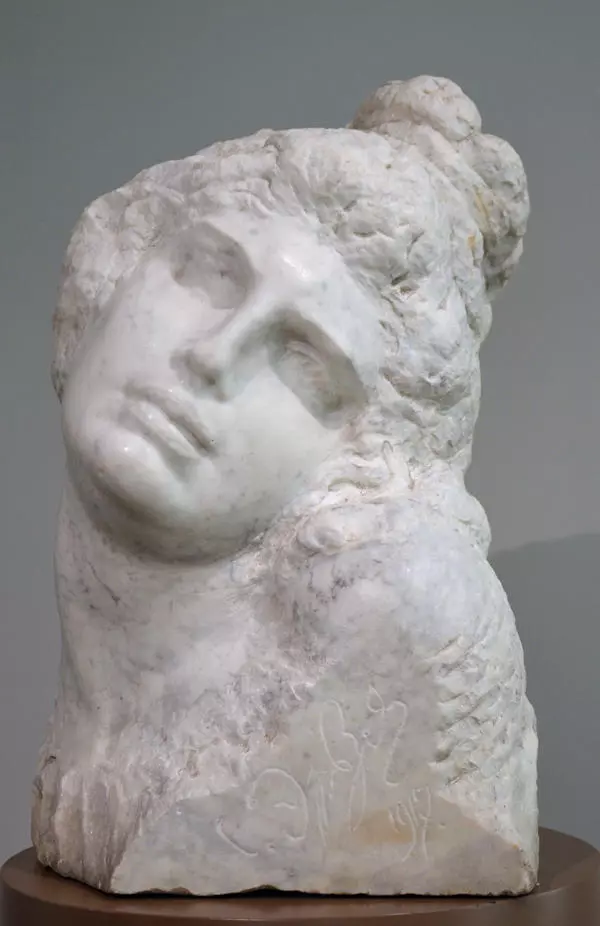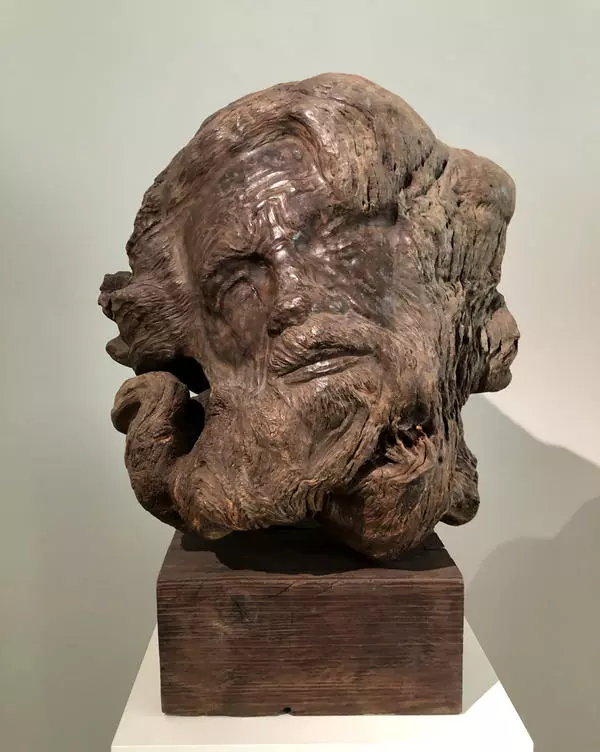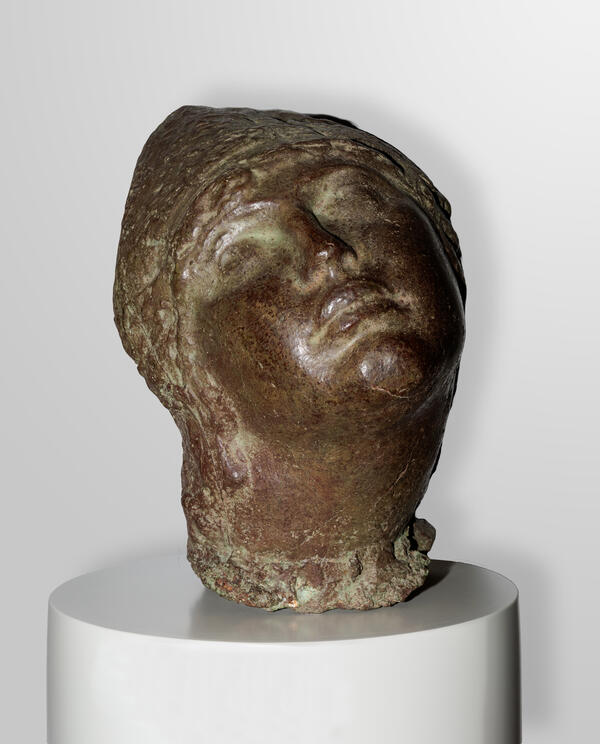Stepan Erzia chose his life path under the influence of his visit to the 16th All-Russian Industrial and Art Exhibition in Nizhny Novgorod in 1896. At the exhibition, twenty-year-old Stepan Nefedov, future sculptor Erzya, had the chance to take a closer look at the works of contemporary Russian artists. The exhibition was visited by more than nine hundred thousand people.
The seventy pavilions of the exhibition were decorated by the best masters of that time: architects, painters, sculptors. The art pavilion featured the works of major painters: Ilya Repin, Vasily Surikov, Grigory Myasoedov, Konstantin Makovsky, etc. At the request of the philanthropist Savva Mamontov who oversaw the work of the pavilion, Mikhail Vrubel made two monumental panels especially for the exhibition: Princess Dream and Mikula Selyaninovich. However, the jury did not accept these works, considering them unworthy of the exhibition. Savva Mamontov ordered to build a separate pavilion for these artworks.
Stepan Nefedov discovered art full of realistic power, inspired by the poetry of conventionality and sonorous metaphor. It was after the encounter with Vrubel’s work that he decided to become an artist. A few years later he was admitted to the Moscow School of Painting, Sculpture and Architecture, where many of the painters who had participated in the exhibition worked as teachers.
In his student years, Stepan Nefedov chose a pseudonym and began to sign his works “Erzya” as a sign of his belonging to the Mordovian ethnic group and its artistic traditions. The young sculptor possessed a well-developed sense of material, one of the most important qualities of the sculptor. He foresaw how his plan would be realized in marble, reinforced concrete or wood. With years and experience, he developed that sense to perfection.
In search of new materials for his artworks, Erzya took a trip to the Caucasus in the 1920’s. Here he tried to work with walnut wood (Caucasian walnut) and Caucasian oak which were completely novel to him. Because of their extensive plastic palette, the sculptor used them as independent materials for his art. Solid wood required large, generalized forms and allowed the use of polishing. In Gelendzhik, Stepan Erzya created The Flyer sculpture in tune with the paintings of his favorite artist, Mikhail Vrubel. An amazing, almost mythological creature soaring in the air dressed in light, flowing clothes, reminds of the Princess Dream.
The seventy pavilions of the exhibition were decorated by the best masters of that time: architects, painters, sculptors. The art pavilion featured the works of major painters: Ilya Repin, Vasily Surikov, Grigory Myasoedov, Konstantin Makovsky, etc. At the request of the philanthropist Savva Mamontov who oversaw the work of the pavilion, Mikhail Vrubel made two monumental panels especially for the exhibition: Princess Dream and Mikula Selyaninovich. However, the jury did not accept these works, considering them unworthy of the exhibition. Savva Mamontov ordered to build a separate pavilion for these artworks.
Stepan Nefedov discovered art full of realistic power, inspired by the poetry of conventionality and sonorous metaphor. It was after the encounter with Vrubel’s work that he decided to become an artist. A few years later he was admitted to the Moscow School of Painting, Sculpture and Architecture, where many of the painters who had participated in the exhibition worked as teachers.
In his student years, Stepan Nefedov chose a pseudonym and began to sign his works “Erzya” as a sign of his belonging to the Mordovian ethnic group and its artistic traditions. The young sculptor possessed a well-developed sense of material, one of the most important qualities of the sculptor. He foresaw how his plan would be realized in marble, reinforced concrete or wood. With years and experience, he developed that sense to perfection.
In search of new materials for his artworks, Erzya took a trip to the Caucasus in the 1920’s. Here he tried to work with walnut wood (Caucasian walnut) and Caucasian oak which were completely novel to him. Because of their extensive plastic palette, the sculptor used them as independent materials for his art. Solid wood required large, generalized forms and allowed the use of polishing. In Gelendzhik, Stepan Erzya created The Flyer sculpture in tune with the paintings of his favorite artist, Mikhail Vrubel. An amazing, almost mythological creature soaring in the air dressed in light, flowing clothes, reminds of the Princess Dream.
